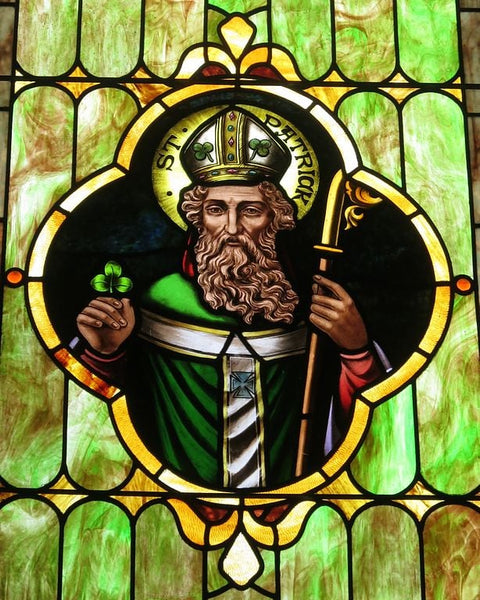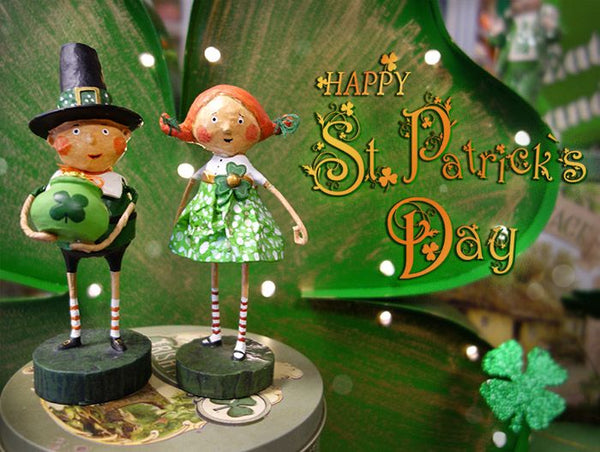Who was Saint Patrick?
St. Patrick's Day has been a well known holiday in the United States for centuries, but there are still a lot of misconceptions about the saint and the holiday itself. Today, St. Patrick's Day conjures up images of green outfits and ever-flowing beer taps, but what you don't know is this holiday is steeped in old-world legends and traditions honoring Ireland's tumultuous past. After you discover the rich history of St. Patrick's Day, you'll never look at the holiday the same way again!

Let's start with the man himself, Saint Patrick. While Saint Patrick is considered to be the patron saint of Ireland, he was actually born in Roman Britain around the late fourth century. According to autobiographical accounts, he was captured at age sixteen and taken to Ireland, where he was enslaved and worked as a shepherd. Over time he converted to Christianity and after six years in captivity, he escaped after witnessing a vision of God telling him to flee to the coast where a waiting ship would take him home. He eventually found a willing captain to take him back to Britain where he became a priest. After many years and yet another vision, he decided to return to Ireland to bring Christianity to the mostly Pagan and druidic people. Once again, his vision lead him to salvation and the conversion of thousands of people, from helping women join nunnery to converting the sons of kings. Numerous legends and stories arose from his time in Ireland, including that he talked to ancient Irish warrior spirits. One famous legend states that he drove out all the snakes from Ireland, however, the only problem with that is there never were any snakes in Ireland, as it's an island surrounded by waters too cold for snakes to live or travel in. What we do know is that he shunned materialistic values and often gave back any gifts or payments received.

It is believed that St. Patrick died on March 17th in 461AD. People of Ireland celebrated this anniversary as early as the ninth and tenth century, but an official Feast Day was declared in the 17th century on March 17th to honor Saint Patrick as the patron saint of Ireland. It served as a break in the fasting ceremony of Lent, and allowed people to eat meat and drink alcohol, which is normally forbidden during the fasting. The celebration spread to America in the eighteenth century where many of the themes and traditions we know today started, however, it's thought that a number of our traditions arose with the saint himself. Another well known folktale about St. Patrick is that he was responsible for popularizing the Shamrock, a three leaf plant that is often a clover or similar plant. The three leaves not only corresponded to Irish triple deities, but were used by Patrick to help explain the Christian Holy Trinity to the Pagan Irish. It is said the three leaves of the clover also stand for faith, hope and love, and luck if there is a fourth leaf, which is why four leaf clovers are considered lucky. However, like many Irish symbols and folklore, four leaf clovers are only tangentially related to St. Patrick's Day, and it's actually shamrocks that are the true symbol of the holiday. It wasn't until the 1720s that the church started associating the shamrock with Ireland's patron saint, as a symbol to remind people of the traditional values of the holiday. Believe it or not, up until this time the color associated with St. Patrick was blue. It wasn't until the Irish Rebellion in 1798 that the soldiers chose to wear green in opposition to the red uniformed British soldiers, often singing the war song, "The Wearing of the Green." This, along with the green of shamrocks and other ties to the color green, permanently associated green and wearing green to Irish heritage, and is still worn today as a tribute to Ireland.

The Great Potato Famine in 1845 Ireland led to nearly 1 million Irish Catholics to immigrate to America, causing an explosion of St. Patrick's Day festivities and popularity. Numerous parades were held throughout the country, but in 1848 several Irish societies in New York banded together to form what is now the world‘s oldest civilian parade and largest in the United States at over 150,000 participants. While unaccepted at first, the Irish soon became a powerful voting block in American political history, and over time their culture and celebrations were accepted. Wearing Celtic crosses and shamrocks for the holiday have been a mainstay over the centuries, but each city has their own traditions for St. Patrick's Day, including Chicago’s annual dyeing of the Chicago River green which began in 1962. Drinking beer and alcohol wasn't historically a large part of St. Patrick Feast Day traditions, but thanks to commercialism, green beer and a big marketing push by Budweiser in America in the 1980s, the holiday has become a well known day of imbibing in the U.S. While it is a fun holiday to celebrate with friends and family regardless of your heritage, it's always important to remember the rich culture of Ireland and altruistic values of St. Patrick that this holiday represents.

One of our favorite things to do on St. Patrick's Day is to decorate with vintage postcard boards, garlands, blocks and other tabletop decor. The classic images of little lads and lasses with harps and shamrocks give you a sense of the warm, inviting people of Ireland and their ancient cultural heritage. Celebrate the rich history of Ireland this St. Patrick's Day by wearing green, doing a jig, drinking a green beverage of your choice and follow St. Patrick's example!






Leave a comment